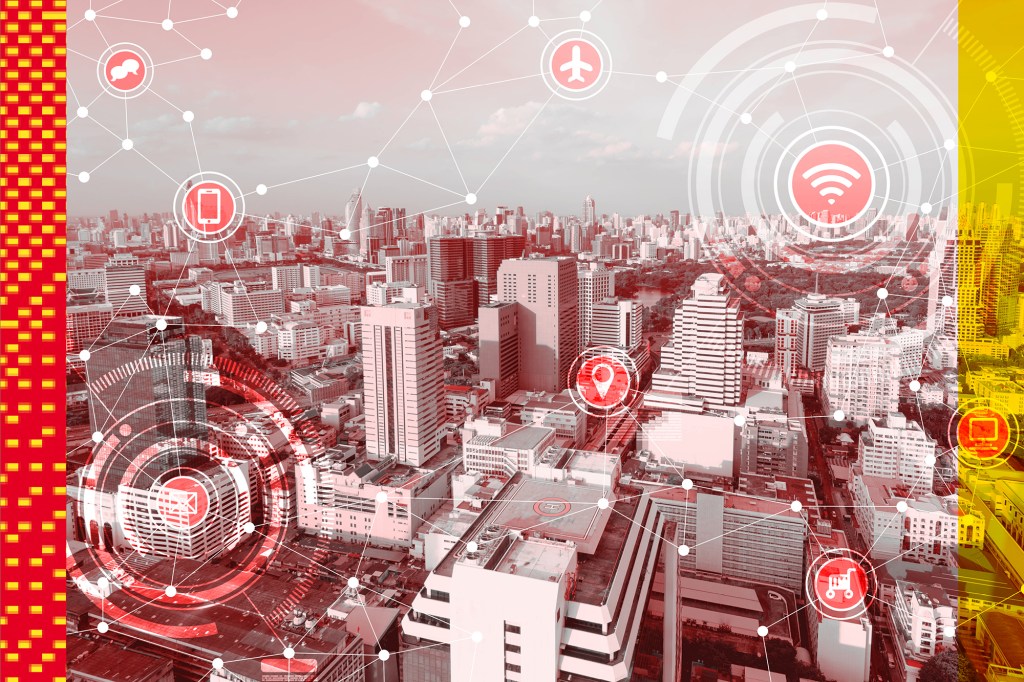1. Solar panels: The smart city is nothing if not green, and ideally net-zero or net-positive. Photovoltaic panels provide renewable energy, alongside wind turbines and other sources.

2. Trash bins: Fill-level sensors on smart trash and recycling cans transmit information to waste services in order to optimize collection routes.
3. Wi-Fi and 5G: Public Wi-Fi and superfast 5G networks enable connected devices to communicate and transmit data without a hitch.
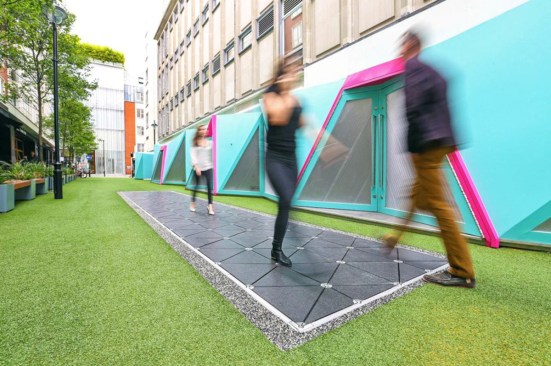
Courtesy Pavegen
4. Pavers: Smart pavers are equipped with a data transmitter and generate electricity from the kinetic energy of footsteps. Embedded lights allow road markings to change in a flash.
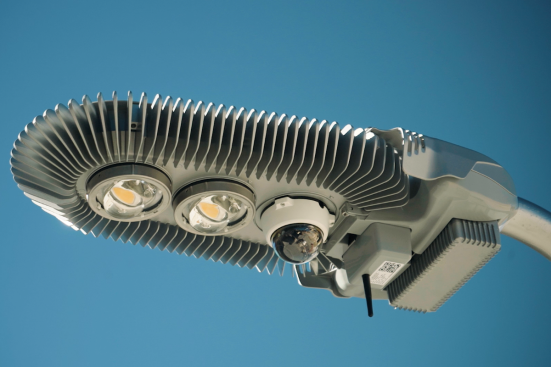
Courtesy Wi-Fiber
5. Streetlights: The Swiss army knife of smart city technology, a typical streetlight will incorporate devices such as surveillance cameras, sensors collecting data on traffic patterns, and gunshot detection systems that analyze audio signals to triangulate the location of gunfire and notify law enforcement.
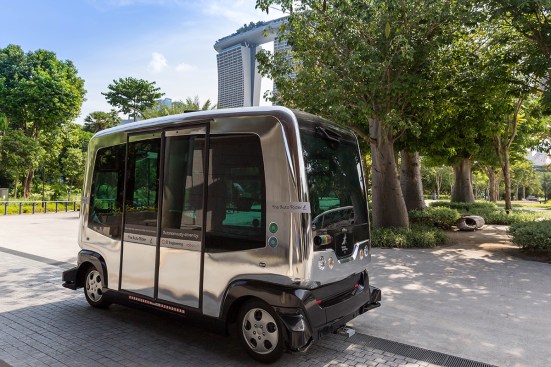
Marco Verch via Flickr Creative Commons
An autonomous shuttle designed by Navya
6. Autonomous vehicles: The self-driving vehicle is the sine qua non of the smart city. Though there isn’t anything particularly smart about an urban center jammed with cars—autonomous or not—many smart city projects have been quick to embrace autonomous vehicles. Mass transit, in the form of self-driving buses and shuttles, could help reduce congestion, carbon emissions, and human error–related collisions.
While the technology may seem like a Jetsons-esque fantasy, it is in fact becoming a reality. Since March 2018, commuters in Neuhausen am Rheinfall, Switzerland, have been able to travel on the electric-powered, self-driving Trapizio bus as part of an initiative launched by the Swiss Transit Lab. Last summer, Chinese tech company Baidu announced the production of its 100th 14-person autonomous minibus. (In October, Baidu signed a two-year agreement to test autonomous vehicles for the Ford Motor Co.) Meanwhile, the U.K. is investing approximately $32 million in three trials with the promise of self-driving public transit by 2021. And Austin, Texas, is now home to what is being billed as the nation’s “largest autonomous bus pilot program.” This summer, the city tested six electric 15-passenger buses with plans for a second phase of trials that will include passengers.
-
The Smart City That Wasn’t
Union Point was championed as a futuristic development that would help lure Amazon to Boston. Two lawsuits and countless unfulfilled promises later, the project is a case study in how smart-city hype can outpace reality.
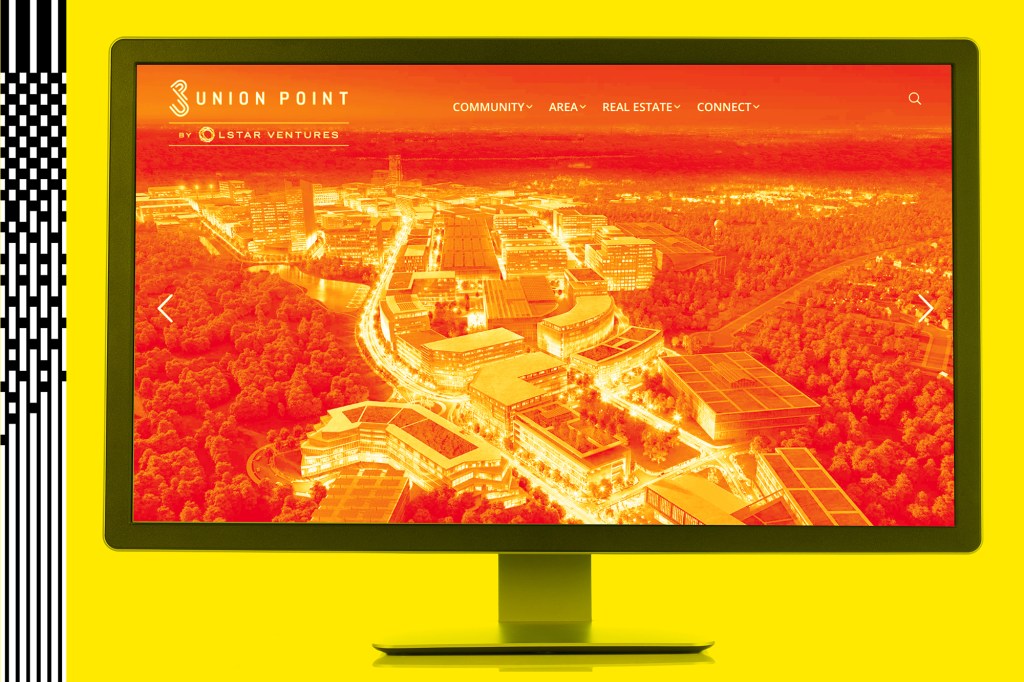
-
Google in Toronto: A Question of Privacy
Google affiliate Sidewalk Labs has prompted a backlash over data privacy with its Quayside smart-city project. Alex Bozikovic reports on what's been overlooked amid the controversy.
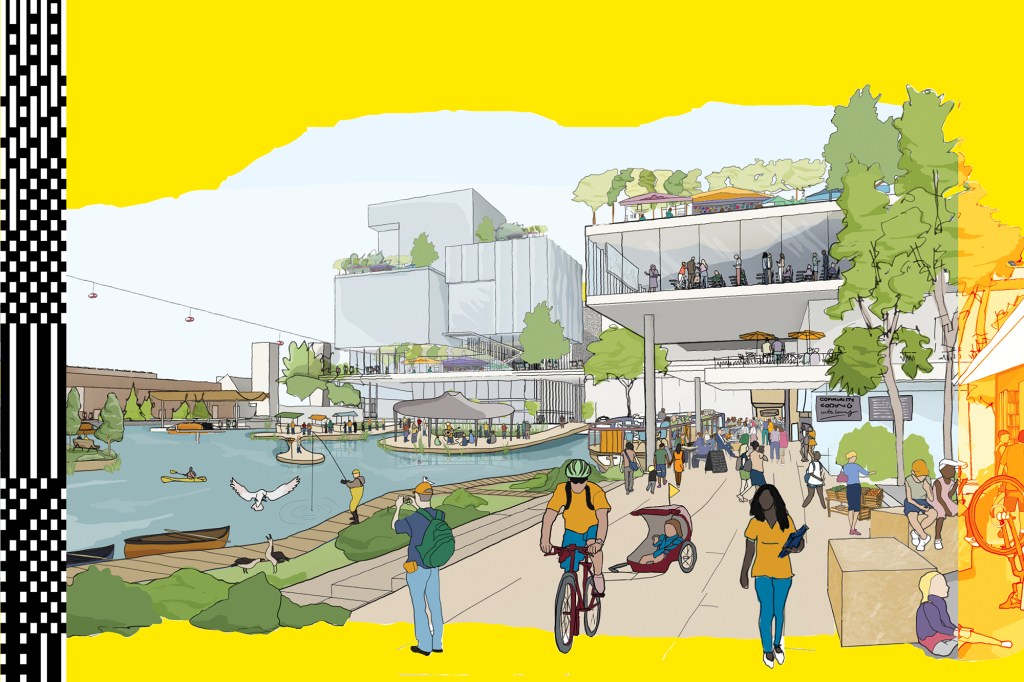
-
Future Proofing the Smart City
The Jurong Lake District in Singapore relies on smart urban planning to achieve resilience and sustainability.
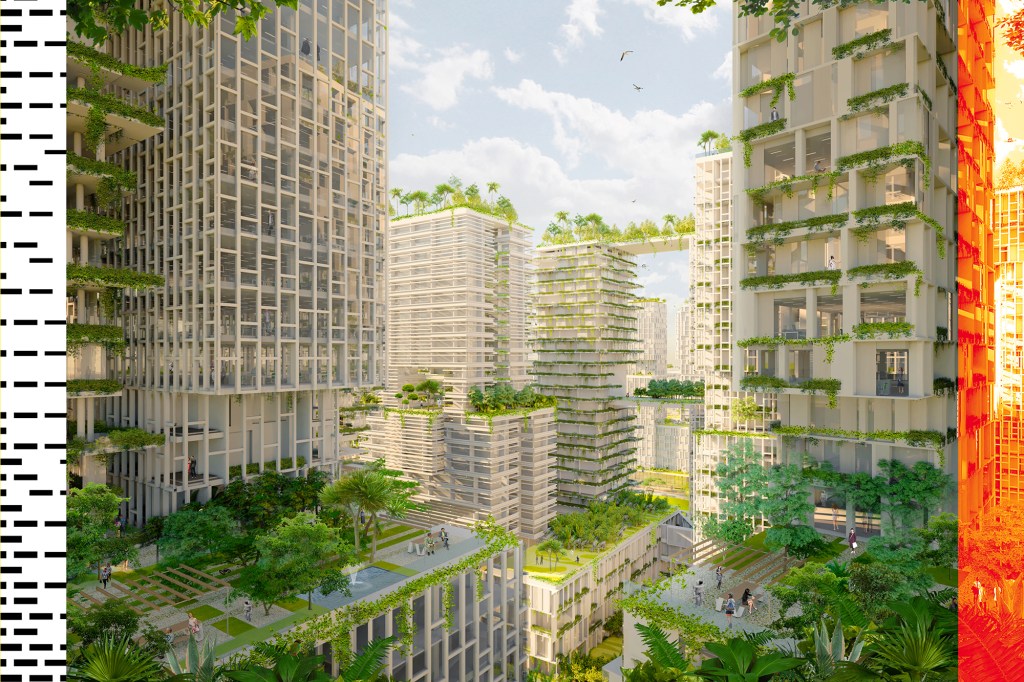
-
Q+A: What Is a Smart City? Three Experts Explain
In a roundtable with ARCHITECT, architect Paul Doherty, policy and sustainability expert Debra Lam, and author Anthony Townsend trade opinions and insights on what the buzzword really means, why the world’s largest companies want a stake, and how architects can step up to the plate.
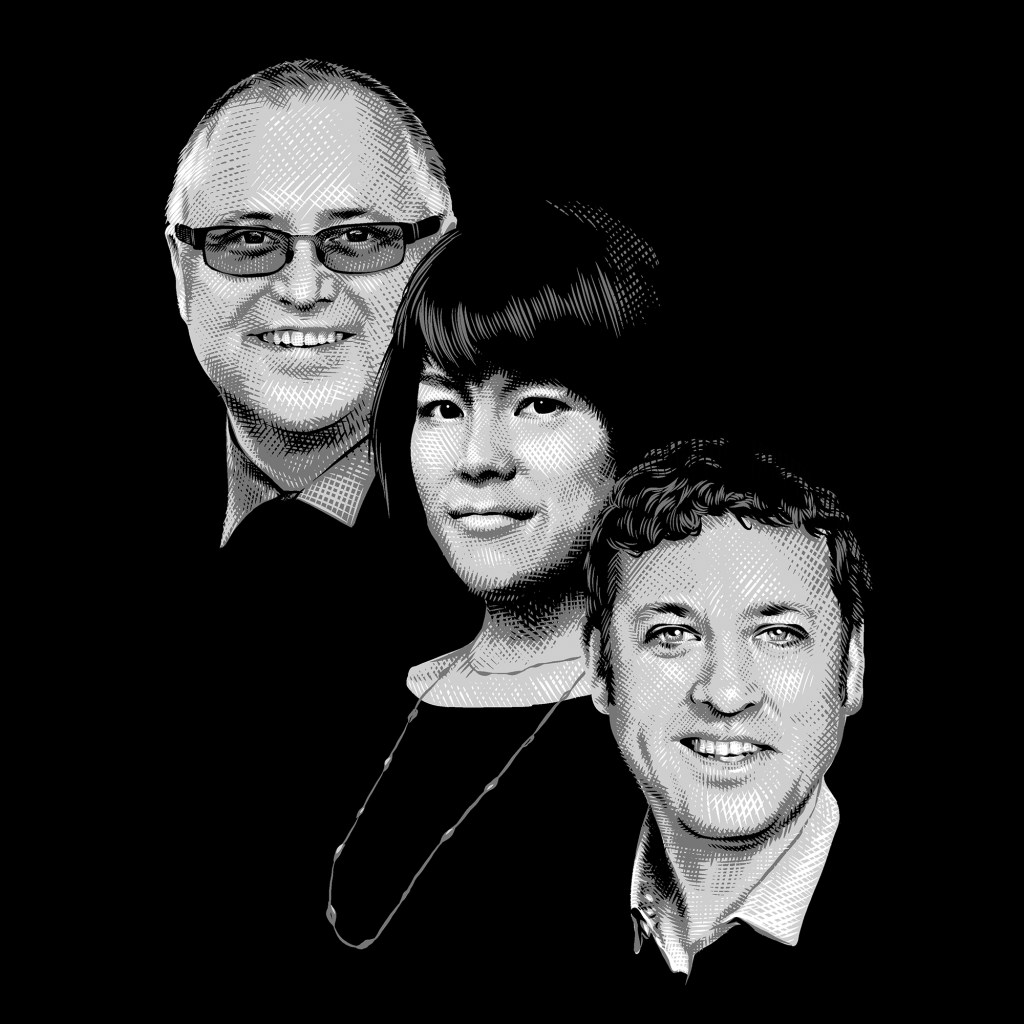
-
The Smart City as a Billboard of Progress
Saudi Arabia and other authoritarian states are using smart cities to transform their economies—with mixed results.
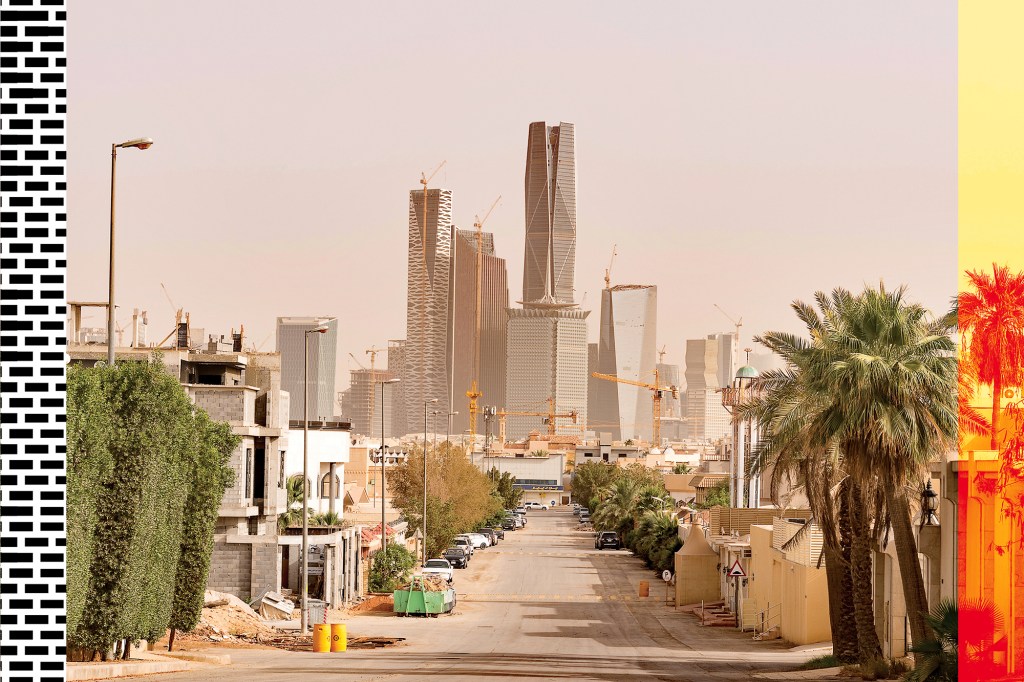
-
A Holistic Vision of the Smart City
Sensitive urbanism, smart technology, progressive architecture, and careful government stewardship make Royal Seaport in Stockholm a model for smart-city development.
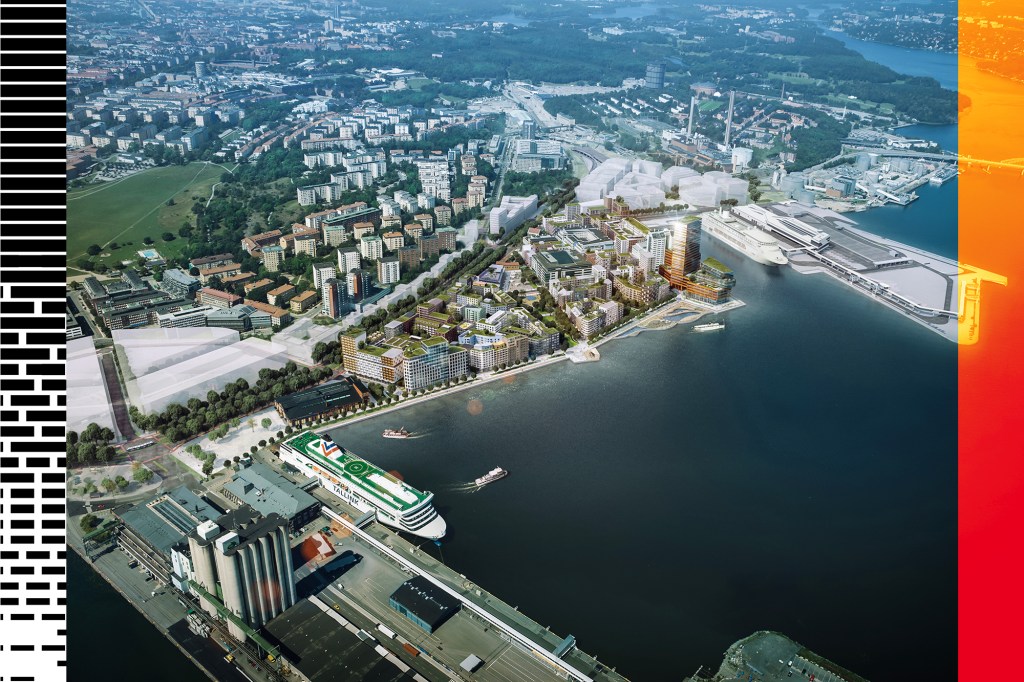
-
A Who’s Who of Smart Cities
Some of the most prominent architects, planners, and critics of the smart city movement.
-
A Pullman Redux?
With their data-rich smart cities of the future, corporations and tech companies are putting a new spin on the company town of old.
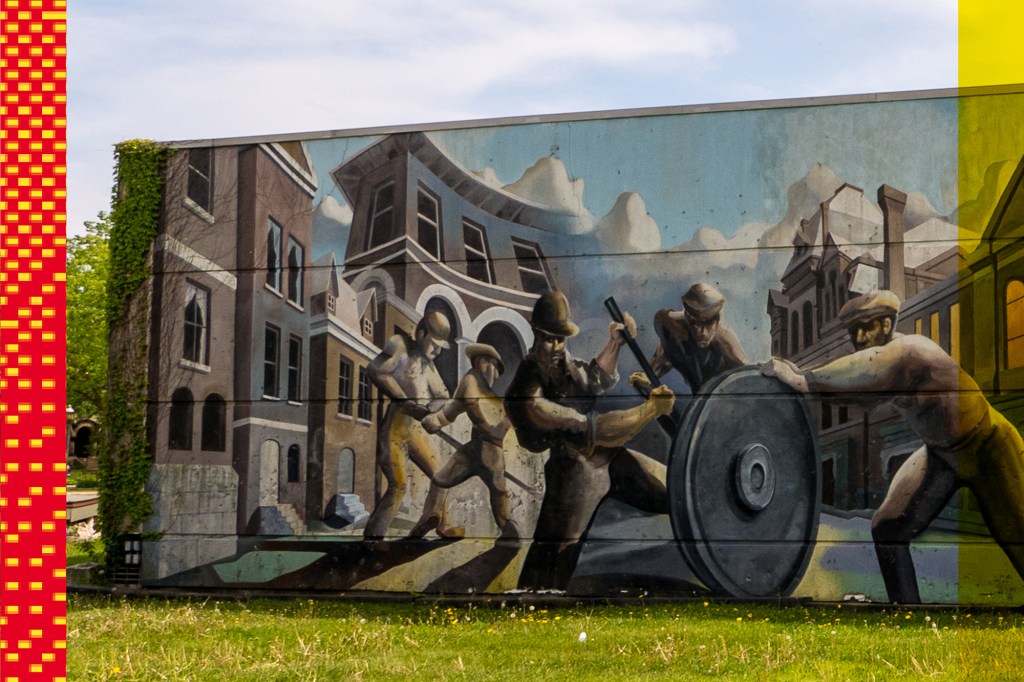
-
Elements of a Smart City
From smart pavers to autonomous vehicles, this is the technology that powers the city of the future.
